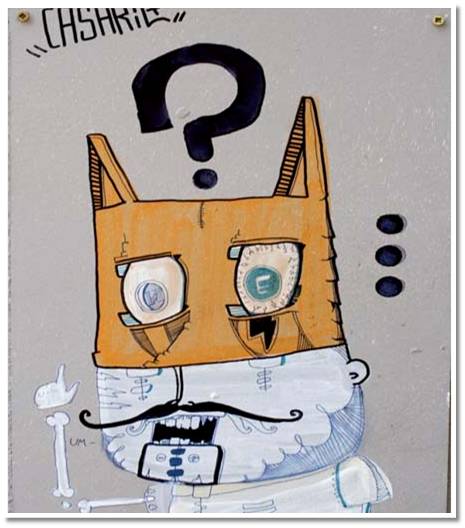The Agile Leader's Toolkit
 For deep sustainability to have legs, teeth and even hair, we need an organisational ethos which promotes fluidity and adaptability. There has been much talk of the current need for agility in organisations and according to McKinsey how in the next five years it will become even more critical. But what exactly is Agility and as a leader how do you practice it? To my mind, the notion of Agility is an umbrella term for a set of leadership capabilities that I think serve as a prerequisite for developing high impact leadership practices today.
Counter to popular belief, one does not match the speed of the environment by trying to “just go faster”. An agile leader does not respond to a faster moving business environment by trying to match the speed thereof. Instead they work with a different order of things, finding ways to adjust their own behaviour and perspective. As Rumi said, “Yesterday I was clever, so I wanted to change the world. Today I am wise, so I am changing myself”. Agile leaders are leaders who are able to reflect, see possibilities and reframe their thinking constantly. They understand the importance of adaptability, grace in failure, curiosity, collaboration, back up, diversity, ease of access and the ability to forecast. By slowing down to build the practices which deliver results in today’s environment they are able to match the pace required.
For deep sustainability to have legs, teeth and even hair, we need an organisational ethos which promotes fluidity and adaptability. There has been much talk of the current need for agility in organisations and according to McKinsey how in the next five years it will become even more critical. But what exactly is Agility and as a leader how do you practice it? To my mind, the notion of Agility is an umbrella term for a set of leadership capabilities that I think serve as a prerequisite for developing high impact leadership practices today.
Counter to popular belief, one does not match the speed of the environment by trying to “just go faster”. An agile leader does not respond to a faster moving business environment by trying to match the speed thereof. Instead they work with a different order of things, finding ways to adjust their own behaviour and perspective. As Rumi said, “Yesterday I was clever, so I wanted to change the world. Today I am wise, so I am changing myself”. Agile leaders are leaders who are able to reflect, see possibilities and reframe their thinking constantly. They understand the importance of adaptability, grace in failure, curiosity, collaboration, back up, diversity, ease of access and the ability to forecast. By slowing down to build the practices which deliver results in today’s environment they are able to match the pace required.
I have developed a toolkit which I hope could serve as a checklist for organisations who are interested in constructing sustainable leadership practices in their organisations - a sustainability which is both palpable in the conversations which their employees have but one which also drives the operations and the decision making processes their leaders engage in daily.
In order to build Agility into the DNA of one's leadership practice, there are nine things which I think are required. I have tried to list these from A-I for ease of reference:
Adaptability Back Up Curiosity Diversity Ease of Access Foresight Grace in Failure Hubs Inclusiveness
Adaptability (Flexibility): We need to be ready to change our plans when they are not working the way we expected. In a world where the rate of change happens faster than our ability to respond to it, how do we change course mid direction? We need to build a healthy robustness around how we are going to react. We can no longer count on things remaining stable. The question is how have you created alternatives for yourself.
Sappi for me, is an interesting case in point. The largest producer of coated fine paper in the world, when faced with a downward trend in their market, went out and bought the second biggest producer. Instead of genuinely engaging with what they could do differently, there seems to be an embracing of more of the same. It has not helped to bolster their share price. The reality is, that it is no longer the survival of the fittest but those who are more able to be responsive to change who survive. What are the ways in which you can nurture your own ability to adapt? Bruna Martinuzzi is worthwhile reading on some quick wins on developing your own adaptability.
Backup (Redundancy): Backup, backup, backup. Perhaps the cardinal rule for an agility based economy is to never leave yourself with just one path of escape or rescue. Eskom, our very own generator of approximately 95% of electricity in South Africa, is a case in point. Faced with a backload of energy shortfall, Eskom has taken on a US$3.5 billion debt to the World Bank to build a coal smelter - which is teneted on old technology and directly generates disastrous environmental consequences for us. Says South African professor Patrick Bond: "South Africa's five-fold increase in CO2 emissions since 1950 and 20% increase during the 1990s, can largely be blamed upon the attempt by state electricity company Eskom, the mining houses (led by Anglo American) and huge metals smelters (especially BHP Billiton) to brag of the world's cheapest electricity. Emitting 20 times the carbon tonnage per unit of economic output per person than even the United States, South African capital's reliance upon fossil fuels is scandalous." A quick solution based on an immediate gratification but one which I believe will have long term implications for our labour market and export sector. Failure to back up in the demand side of their business has resulted in an economic debt which will have dire social implications.
 Curiosity
Curiosity cues our attention. It provides a lens for what we focus on. It emerges when the mental model we use currently is disrupted. One may have one of two responses - judgement or curiosity. Judgement will shut down new possibilities whereas curiosity will allow one to see other alternatives. As it requires that one’s way of seeing be challenged it more often than not demands that we look outside of the discipline we know to see other alternatives. According to Todd Kashdan (2009), lack of curiosity is a breeding ground for stereotyping and discrimination, inflated confidence and ignorance that can lead to poor decision making, dogmatism and rigidity of thought. An agile leader is a curious leader.
Curiosity
Curiosity cues our attention. It provides a lens for what we focus on. It emerges when the mental model we use currently is disrupted. One may have one of two responses - judgement or curiosity. Judgement will shut down new possibilities whereas curiosity will allow one to see other alternatives. As it requires that one’s way of seeing be challenged it more often than not demands that we look outside of the discipline we know to see other alternatives. According to Todd Kashdan (2009), lack of curiosity is a breeding ground for stereotyping and discrimination, inflated confidence and ignorance that can lead to poor decision making, dogmatism and rigidity of thought. An agile leader is a curious leader.
Diversity: If you don't rely on a single kind of solution, you won't suffer from a single point of failure. This is perhaps the greatest and most significant contribution South Africa, as a nation can offer. After all, it is embedded into our ecolological DNA. Take Fynbos. In the Western Cape alone, there are 2200 species on Table Mountain. They coexist harmoniously and if after 8 years, if they don't experience fire, they die. Multiple perspectives allow multiple entry and exit points to challenges we are facing. If we don’t face the fire of our judgement and opinions the likelihood of them surviving is questionable. And perhaps the measure should be having your ideas questioned every 8 hours rather than every 8 years.
Ease of Access: Don’t hide your systems-transparency makes it easier to figure out where a problem may lie. Share your plans and preparations, and listen when people point out flaws. I think Michael Jordaan of FNB is a shining example of this. As the CEO of one of the biggest banks in South Africa he has an active Twitter presence where he can share new developments in his market and quell fears regarding network breakdowns. The downside is that I have seen him have to be online at close to midnight giving systems updates and gets asked questions like what is the branch code for little known areas> However what  this ease of access has allowed is for FNB to stand out as a pioneer in what the worth of transparency is and what it can do for your brand.
this ease of access has allowed is for FNB to stand out as a pioneer in what the worth of transparency is and what it can do for your brand.
Foresight: As Nassim Taleb said, if we only knew how closely the word ‘prophecy’ and ‘foresight’ were aligned in Semitic languages we would be less confident about our abilities in that arena. You can’t predict the future. But as Bobby Godsell wisely said, “you can hear its footsteps approaching”. Think and prepare. It reminds me very strongly of the Truth & Reconciliation Commission set up in South Africa post independence. Nobody knew what the fallout of a devastating system of oppression would be, but introducing a systemised process which allowed people to share their stories in some small way eased a piece of the enormous burden of this history. The question to ask is what sort of practice can you build into your own leadership behaviour which builds an awareness of the foresight which might be required as an agile leader?
Grace in Failure: Failure happens, so make sure that a failure state won’t make things worse than they are already. In fact according to Thomas Watson, founder of IBM, "If you want to succeed, double your failure rate". The story of Mxit has always been an inspirational one for me. The genesis of Mxit was a multi player gaming platform. Scripts had been developed, actors cast. When tested with their user base the overwhelming response was that people wanted a place to talk and share on mobile. Instead of fighting the need, the developers humbly listened to their followers and built what has become the largest social network in Africa.The acceptability of this is so common now that Silicon lexicon has introduced a word called Pivoting for it. What you start with will probably not be what you end up with. Instead of seeing this as a failure it is instead a sign that you are on the right track.
Hubs (Decentralization): Centralized systems look strong, but when they fail, they fail catastrophically. The recent rumblings of consolidating all the provinces into one centralised system strikes somewhat of a warning bell. There has been much debate around the value of matrix organisations and decentralised units. What allows a decentralised system to perform is when it has a centralised node of trust. Agility demands that there been an alignment between principle and action. Centralisation without trust is a potentially catastrophic fail.
 Inclusiveness (Collaboration): The reality is that we are all in this together. Take advantage of collaborative technologies, especially those offering shared communication and information. I think the open source operating system built from Linux core architecture called Ubuntu led by SA tech billionaire Mark Shuttleworth is an inspiration. The open source approach enables the OS to develop in line with the market needs, as it develops and grows through various contributing developments and thus 'scratching their own nearby itch'. Although the software is free, the premium offerings , like IBM come at a fee. This collaborative, 'the more you share, the more you win' approach has generated extraordinary results for both business and education. Coursera is another exciting new development with a host of Ivy league schools in the States creating 123 free online offerings by seasoned academics like Dan Ariely whose course on Irrational Behaviour I look forward to taking in March 2013.
Inclusiveness (Collaboration): The reality is that we are all in this together. Take advantage of collaborative technologies, especially those offering shared communication and information. I think the open source operating system built from Linux core architecture called Ubuntu led by SA tech billionaire Mark Shuttleworth is an inspiration. The open source approach enables the OS to develop in line with the market needs, as it develops and grows through various contributing developments and thus 'scratching their own nearby itch'. Although the software is free, the premium offerings , like IBM come at a fee. This collaborative, 'the more you share, the more you win' approach has generated extraordinary results for both business and education. Coursera is another exciting new development with a host of Ivy league schools in the States creating 123 free online offerings by seasoned academics like Dan Ariely whose course on Irrational Behaviour I look forward to taking in March 2013.
We live in a world with high degrees of complexity, uncertainty and inequality. In order to be able to do effective, meaningful and impactful work we require a different set of leadership practices. I would be curious to hear about some of the leadership practices you have started to build to make agility a daily part of your leadership toolkit.


